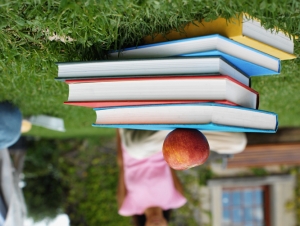Flipped Learning takes place when students are assigned videos to watch prior to class in order to be able to discuss the content in class. The videos can be teacher lectures, documentaries, short films, etc., that pertain to the lesson and/or unit being taught. Flipped Learning is an innovative way to allow for more interaction among students and teachers. The idea behind this up and coming concept is that students need teachers to answer questions, provide help, and guide their thinking, instead of just presenting a lecture and reviewing facts. Flipped Learning, also known as the Flipped Classroom has numerous benefits, but must be executed appropriately in order to avoid some of it's drawbacks.
Positives:
- Utilizes technology in order to reduce lecture time in the classroom.
- Allows teachers to differentiate instruction, and students to learn at their own pace.
- Appropriately integrates technology into the classroom.
- Increases interaction student to student and student to teacher.
Negatives:
- Students may choose not to do any of the out of class assignments.
- Students may be easily distracted by other internet sites.
- Teachers may not properly implement "flipping."
- Students may not have access to the necessary technology.
Implications for the Future:
I think that Flipped Learning is going to have a wonderful impact on education. I'm excited and scared at the same time. The excitement stems from the idea of being able to present lessons in different ways, and having a greater ability to differentiate them for my students. I am scared because I'm not entirely comfortable with being in front of the camera. I realize this is an anxiety that I will have to overcome, but for now it is still a bit foreign to me. I am completely comfortable with assigning parts or a documentary or an educational YouTube video to watch, but when it comes to taking center stageI have cold feet. I guess it will just take a few glasses of wine bit of practice.
Resources:
Further Exploration:


